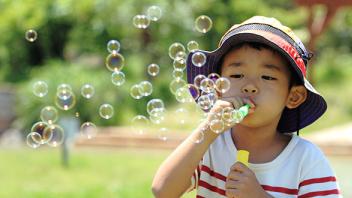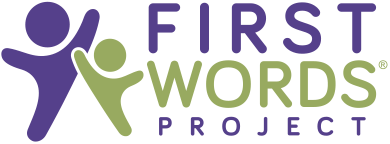Your child has been identified as having delays in social communication skills. Since the earliest signs of autism spectrum disorder (ASD) are delays in social communication skills, it is important to know that your child is at risk for having ASD.
The following information may be helpful in understanding more about social communication problems in young children.
Why is early intervention important?
We know from the latest research that some of the most important learning occurs during the first three years of a child’s life. The brain and nervous system of a newborn child are not fully mature. Pathways in the brain develop as infants and young children learn from exploration with people and objects in their environment. The wiring of nerve cells is most rapid during this critical 3-year period. By age 3, most of the major brain structures are mature, and later it becomes more difficult to make significant changes in a child’s brain and nervous system. A stimulating learning environment during the first 3 years is critically important to support positive outcomes.
Should I be concerned?
Deficits in social communication skills may be early signs or “red flags” of ASD, and therefore, children with social communication delays should be evaluated for ASD. Not all children with delays in social communication skills will be diagnosed with ASD. Nor will every child need ongoing intervention. However, research has demonstrated that a reliable diagnosis of ASD can be made as young as 18 to 24 months of age by experienced professionals and most families find that early intervention is helpful for their children and for themselves.
ASD is called a spectrum disorder because of the variability in behaviors of children with the diagnosis. Some children repeat chunks of language from videos or TV, others fuss or tantrum to get what they want, and others may play for long periods of time by themselves. Between 2 and 3 years of age children may begin to demonstrate more repetitive behaviors associated with ASD such as lining up toys, opening and closing doors on toy cars, or repetitive mannerisms such as flapping hands.
ASD affects development over time and early intervention is critical to their success. Without early intervention small delays in social communication in young children can lead to significant behavior and learning problems by school age.
Children with ASD may not respond in typical ways to their environment or to people trying to engage them. Think back to the bubble blowing activity described above. A child with ASD may get excited and smile when you blow bubbles but not look at you to share his enjoyment. Another may want the bubbles to continue but not know how to indicate she wants more. Yet another may prefer to roll or spin the bubble jar on the table.
Children at risk for ASD may spend a lot of time “in their own world” or engaging in certain activities repeatedly, such as watching videos, building with blocks, or playing on the computer. These activities make sense to children with ASD and are generally preferred to more social activities. As a result, children may become experts with objects but have very limited skills interacting with and learning from people.
There is mounting evidence that demonstrates the effectiveness of intensive early intervention with a substantial proportion of young children with ASD. Research indicates that intervention beginning before age 3 has a much greater impact than that after age 5. With intensive early intervention, 70-90% of children studied have learned to talk and about 50% have been able to succeed in regular kindergarten.
Should I pursue a diagnosis at this time?
For toddlers, a diagnosis may help families access appropriate early intervention during this critical period of development to support learning. As a child reaches his or her third birthday, a diagnosis may be helpful in obtaining appropriate services in a school-based special education program.
Best practices for the diagnosis of ASD suggest a multidisciplinary team evaluation that includes a psychologist and speech-language pathologist with experience working with young children with ASD, and may include a physician, occupational therapist, early childhood educator, social worker, and others, as appropriate.
What is early intervention like for young children?
The first step in early intervention is to conduct a developmental assessment to identify a child’s strengths and challenges. The family and professionals then identify goals to be addressed in early intervention. Early intervention can range from weekly to daily sessions and may be individual or in groups with other children.
With very young children, the family plays an active role in the sessions and learns strategies to foster their child’s development. Usually, the activities and strategies used are based on how children typically develop, and therefore, are beneficial for promoting learning with any child.
Your child’s progress should be monitored during intervention to determine whether your child is benefiting, and changes in strategies should be made as needed. Early intervention promotes positive social and communication interaction between you and your child.
Want to learn more? Subscribe!
FIRST WORDS® Project is a longitudinal research investigation in the Florida State University Autism Institute, directed by Dr. Amy Wetherby. Our goal is to identify early signs of communication delays in young children by improving screening tools and helping families support child development. Copyright © 2019 Florida State University. All rights reserved.
Developed by the Early Social Interactions Project Project. © 2015 Florida State University. All rights reserved.

